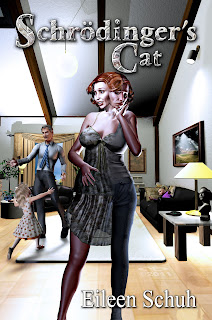As per yesterday's blog, I could tell from prints I found
in the snow that the bears had awoken from hibernation...and that something/s
had ripped up the snow in front of one of my trail cameras, as if there had been a party in the woods.
I’d not been able to determine what had caused the chaos.
Aside from my dogs’ prints and one small bear print, I’d not been able to
identify any animal suspects.
What follows are the most amazing photos I’ve ever captured
on my trail cameras—well, at least a close second to the picture of the doe
birthing...or the twin speckled fawns...or the woodpecker. The lynx. Anyways,
they are amazing—and were snapped over the course of half an hour, just minutes before I showed up. (I was close
to crashing the party!)
They are day shots, which means they are coloured and well-focused.
My camera is set to take three quick pictures in a row once the motion sensor
is tripped, so it’s almost like watching a video. For the sake of space and reducing redundancy, I've edited out many of the stills, but these that I've chosen--well, I’ll let these two brothers tell you the rest of the story.
My story continues below the photos.
I do not know where these bears came from, where their den was, where they were last year. Nor can I say if they’ll hang
around my place throughout the summer. I surmise they are siblings, from their size and their play. They look
like cubs facing their third spring (which is when mama kicks them out to be on
their own.
I believe they were playing, not fighting over the potato
peels as neither did much eating plus they approached and left together. It did
not end with one chasing the other off, as would likely happen in a fight. Although,
if I hadn’t shown up when I did, who knows? I visited that spot halfway through
my walk, so they probably heard me out there about the time they took off.
I’ve never before caught a blond cub on my cameras. The black cub that showed up last year on my trails was one of a set of twins, both
black, who appeared with their mom for two years. Last year, year #3, mom
disappeared after mating in the spring and only one cub was captured on camera after that.
Perhaps his sibling didn’t survive the winter, or perhaps he took off elsewhere
to establish his territory while mama went mating
My husband has frequently seen a huge blond bear near here,
and it showed up on the cameras during last year’s mating season. (In this
area, black bears mate in the spring but the embryos don’t start developing
until the fall. Sometime over winter, while the sow is hibernating, the cubs
are born.)
Black, brown, white, cinnamon, blond, blue...no matter the
color, they are all called black bears. There’s not a lot of research on whether
colour is hereditary, but it’s quite plausible (to me) that big blondie, one
hill over, is the papa.
Thus, my story remains incomplete. I don’t know who the
mother and father are, and I don’t know what happened to the resident four-year
old that I have watched since he was barely bigger than my Pomeranian.
Unless bears are sows with cubs or are breeding, they are usually solitary creatures, and very territorial so it's not likely these two will stay together. If by chance the resident sow or her older cub wake up from hibernation near here and reclaim their land, these two will probably have to move on and find a different place to party.
Who partied in the woods is brought to you by SCHRÖDINGER'S CAT.
"I loved it from the first
word."
"And the ending I never expected"
"Thoroughly rocked my socks..."
Eileen Schuh, Author
FIREWALLS
FATAL ERROR
Schrödinger's Cat
THE TRAZ
Web site: http://www.eileenschuh.com
Blog: http://eileenschuh.blogspot.com










2 comments:
Is that what the First Nations in B.C. call a spirit bear, Eileen? They are quite rare and apparently are not albinos but are white with pink noses. It is very likely that the big blond bear was the father, as he would be one of a kind probably. So glad you came along when you did and not earlier or they may have had more than potato peels to eat!
I think the Spirit Bears are even lighter in colour, almost as white as a polar bear. It seems to depend on where the bear lives, as to what is the most common colour. In the Boreal Forest where I live, most black bears are black, but in places like Yellowstone Park, most black bears are brown. I call this bear blond, as he's a bit lighter than what I'd call brown.
Post a Comment